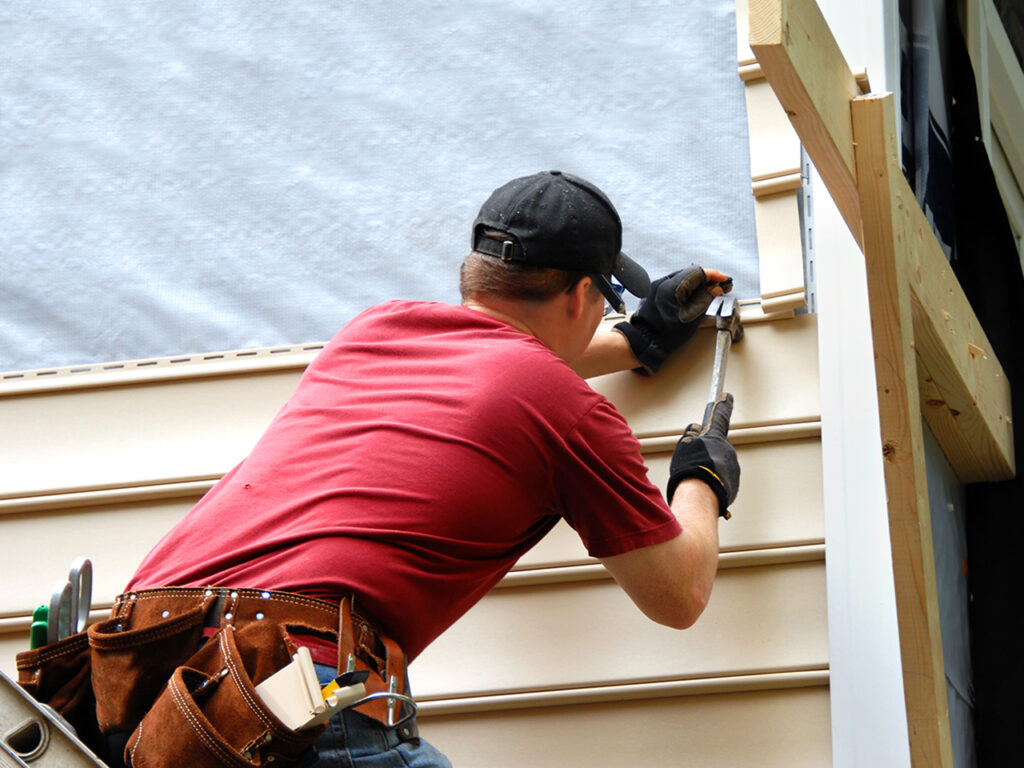Unveiling the Relevance of Picking the Right Outside Sidings for Long-Term Durability
When it concerns the structural stability and aesthetic allure of a building, the selection of outside house siding plays a pivotal function. The sturdiness of siding materials can significantly impact the long life and overall upkeep prices of a building. The sheer range of exterior siding options readily available in the market can make the decision-making procedure daunting. Understanding the crucial elements that influence the resilience of outside sidings is necessary for making notified selections that can stand the examination of time. By unwinding the complexities bordering this decision, a more clear course in the direction of lasting and long-lasting home siding services arises.
Variables Affecting Siding Sturdiness
Examining the installation process is crucial in determining the factors influencing home siding resilience. Correct installment plays a considerable duty in ensuring the durability and efficiency of exterior sidings. Factors such as making use of high quality products, competent labor, and adherence to supplier standards during installation are necessary for making the most of the resilience of home sidings.
The sort of product used for house sidings is a main factor affecting their durability. Materials like vinyl, fiber wood, cement, and steel have different levels of longevity and call for specific upkeep techniques. Furthermore, direct exposure to environmental elements such as sunshine, dampness, and extreme temperature levels can impact the durability of home sidings.
Additionally, the top quality of setup directly impacts the sturdiness of home sidings. Inappropriate installation can lead to issues like warping, fracturing, or water infiltration, endangering the structural stability of the exterior sidings. Employing skilled specialists and following appropriate setup treatments are critical steps in ensuring the resilience of exterior home sidings.
Influence of Weather Problems
Exposure to various weather components such as rain, snow, hail storm, UV rays, and varying temperature levels can impact the toughness of exterior sidings over time. Continuous direct exposure to moisture from rain or snow can lead to water seepage, creating mold, mold and mildew, or rot growth in exterior sidings made of materials like timber or fiber concrete.
Choosing the appropriate house siding material that can endure the specific weather condition conditions of a region is vital for lasting toughness. Recognizing the influence of climate conditions on outside sidings is essential in making notified decisions to make sure the durability and efficiency of the exterior siding financial investment.
Power Performance Factors To Consider
Provided the considerable role weather play in identifying the sturdiness of outside home sidings, it is crucial to likewise take into consideration the energy efficiency ramifications when picking the most suitable house siding product for a residential or commercial property. Power performance is a crucial variable to contemplate as it directly influences a residential property's cooling see page and heating prices. Choosing for energy-efficient siding products can add to maintaining a comfortable interior temperature throughout the year while possibly lowering power costs. Materials such as protected vinyl, fiber concrete, and crafted timber house sidings use enhanced energy performance by offering far better insulation for the property. These products help in avoiding page warmth transfer, keeping the interior colder in the summertime and warmer in the winter, which decreases the lots on heating and cooling down systems. In addition, energy-efficient sidings can additionally add to a more ecologically friendly and sustainable residential property by lowering overall power consumption. When determining on outside sidings, considering their energy performance can lead to long-lasting cost financial savings and an extra environmentally aware selection for the property.
Upkeep Needs and Prices

Plastic exterior siding normally has lower maintenance costs compared to timber or fiber concrete siding, as it does not require frequent painting or staining. It is vital to variable in long-term upkeep costs when at first selecting a house siding material to ensure that the this contact form overall life time expenditures align with your budget plan.
Durability and Return on Investment
Comprehending the long life of various exterior house siding materials is essential for residential property owners looking to optimize their return on financial investment. Selecting an exterior siding product with a long life-span can dramatically affect the total cost-effectiveness of a building.
In terms of return on financial investment, exterior siding products that provide longevity can boost the value of a residential or commercial property. By considering the durability of exterior house siding materials, residential property proprietors can make informed choices that profit them in the long run.
Verdict

The resilience of home siding products can significantly influence the long life and general upkeep expenses of a property. Understanding the influence of climate conditions on outside home sidings is crucial in making notified decisions to ensure the long life and performance of the house siding investment.
Provided the substantial function weather condition conditions play in establishing the durability of outside sidings, it is important to also consider the power performance effects when selecting the most suitable home siding material for a building. Vinyl exterior siding usually has reduced maintenance costs compared to wood or fiber cement exterior siding, as it does not call for constant painting or staining. By carefully taking into consideration these factors and picking the ideal product, residential property proprietors can maximize the sturdiness and return on financial investment of their outside siding.